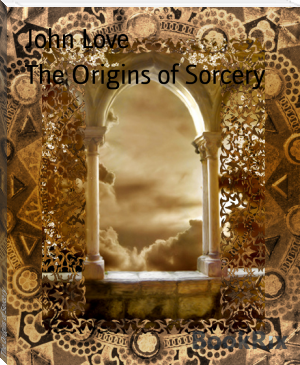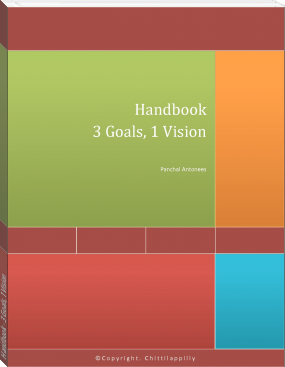Practical Witchery! - John Stormm (best novels to read for beginners TXT) 📗

- Author: John Stormm
Book online «Practical Witchery! - John Stormm (best novels to read for beginners TXT) 📗». Author John Stormm
In this chapter, I’ll try to define what we mean when we speak of different kinds of witches, and some of the terms for various craft items and such. I intended to do these in somewhat of an alphabetical order; however, so many of the terms are synonymous with others, and that blows the whole order, as I don’t want to make this tediously long. I doubt that I’ll get to ALL of them, and not to everyone’s fullest satisfaction here. I’d rather deal with them, in the most general terms that I can use, to just give an idea of what these terms mean. Truth all told: Even among witches, there are so many variations of cults, sects and quasi-religious nit pickings, that one can go quite insane in trying to define any one of them. And even if I went so far as to grace you, with ALL the ins and outs of proper Danaan witchcraft, inevitably, because of your own basic proclivities: You will alter or adapt what you learn, to better suit yourself. We ALL do, and I see that as a GOOD thing! It begs to have your own personal connection, to really work well for you.
Adept - a witch or mage, who is naturally or genetically inclined to have a greater proclivity of paranormal powers. It can also be one who by diligent practice, has reached such a high level of proficiency in their craft.
Athame - (ahthah-may) a witch’s ceremonial long knife. Usually a double edged blade, that is consecrated for ritual use only, and never handled by others. Many sects of witches prefer a dull edged knife. Most of the Old Craft witches require the sharpened variety for use in cutting herbs, cords, or even blood sacrifices for divinations of entrails (not common among most of us).
Many times, this can be a short or long sword that is consecrated for ceremonial purposes, and also called a Witch Blade.
Magick - an old spelling, used to differentiate what we are speaking of from card tricks and stage magic for entertainment purposes.
Mage - Ceremonial witches or magicians - those who rely mainly upon the use and power of rituals to effect their spell work. A practitioner of paranormal powers.
Witch - From the Gaelic “Witte” (wih-cheh), our root word for “wit’ and “wisdom”, denoting a “wise one” , or a Wise Woman. In ancient Celtic society, they represented the Lunar, or Feminine aspects of the craft, and wore the neutral clan color of black as a matter of course. This is not to say that ONLY women were witches, but the natural proclivity for women to nurture the intuitive traits and affinity for lunar cycles, they were always the predominating gender of this aspect of the craft. I will speak more to this trait specifically under Dianic Witches later on in this chapter.
Druid - Solar or Masculine aspects of the Old Craft infrastructure of ancient Celtic society, and wore the clan neutral white robes designating their office. Even as with the witches, the druids are not always ONLY men. The teacher of war craft (martial arts), to the Irish hero, Finn McCumhal was said to be a druidess.
Warlock - from the Gaelic word "waerloka", literally: oath breaker or traitor, an unscrupulous mage that has broken with their original oath, from the earliest Mystery Schools, to use the advanced aspects of the craft of the wise, to ONLY use this knowledge to benefit their communities, and NEVER themselves and the expense of others. Many today, via the propaganda of the Roman Church, believe these to be “male witches”. Honest, Old Craft witches find this extremely offensive. See Will & Word.
Will and Word - It witch’s truest power is made manifest in their unbroken and unbreakable Will and Word, as illustrated in this signing for Witch’s Honor. It was not merely the witches of old, who observed this as a standard value. Long, long before Madison Avenue, a witch or magi-strate, a noble or an artisan, established their unbroken word as their bond in any and all business dealings. If you ever wanted to thrive in your business, you HAD to establish that you ALWAYS delivered as promised. To fail at this was unacceptable in ALL social circles, and make you a social anathema, or pariah, worth avoiding and never being done business with as a known cheat. Hence: Warlocks (oath breakers) ALWAYS met in secret to conduct their business schemes, long before the days when the Roman Church would demonize all members of the Old Religion of craft. To this day, in many rural Celtic settings, there are people known for their larger-than-life dedication for the extents that they are known for ALWAYS keeping their word as unbroken. This is an ancient carry over from our pagan times.
Water Witch - Dowser, or one who uses divining techniques (i.e.- dowsing rods) to find water at its shallowest points, to dig wells. Dowsing is also used to find lost items, bodies, oil, gold and just about anything else as well.
Kitchen Witch - or Cottage Witch. A practitioner who uses the tools at hand to work their spells and create their rituals. It is not confined only to the kitchen or cooking, but it is much more. Working with nature to make the hearth and home a secure and sacred place.
Eclectic witch - One who will pick and choose from different traditions of esoteric disciplines. Wiccans are eclectic by the nature of their craft.
Satanic Witch - Considered by true pagans as a contradiction of terms. By the Threefold Law of Karmic Returns, one cannot be considered “wise”, who has devoted themselves to “evil” in any form. It’s akin to throwing an anvil up into the air, and standing under it. This form of witchery was solely the invention of the Roman Church, as propaganda to persecute the Old Craft out of existence, and give them unrestricted access to the peasantry, without any contention, by any other authority who truly understood spellcraft. Satanism, like Roman Christianity, came to the masses in a “top-down” fashion, through the royal courts, by its Bishops and warlock (oath breaking) clergy, visiting these upon the landed nobility, and establishing their embassies as cathedrals, priories, convents, abbies and churches, also granting approval for kings to rule, and collecting a tax or tithe of the citizens of that land. They established themselves early, as the “true law of the land”.
Luciferian, or Promethean warlock - One who views Lucifer (Light Bringer), as Prometheus (Fire Bringer), as having rebelled against Heaven, to bring mankind occult knowledge. The Prometheans were the earlier Mystery School fraternities, of the two. In BOTH cases, their gods are considered the heroes, for having brought down this forbidden knowledge from the Heavens, in spite of Zeus’, or Jehovah’s orders to the contrary. Both sects are patriarchal, in their nature: Giving men the preeminence and authority over women as second class citizens, or even as property. Earlier Enochian Manuscripts, attribute this knowledge and technology coming down from the heavens via 200 rebel Watchers, teaching these to the women they mated with, and creating a matriarchal society, where either women OR men, could have preeminence on a more equal footing. Of such origins came the original ancient wyrding clans, and royal bloodlines from the heavens. As the warlock wrested more and more temporal power over the religious masses of their “sheep”. The matriarchal clans took a back seat, under threat of horrific deaths for witchcraft, which is STILL practiced in Roman Churches and others to this very day. Also included in these sects are: Theosophists, are alleged to have began with Madame Blavatsky, one of the co-founders, in 1875 of the Theosophical Society in New York. Self admittedly, Blavatsky was introduced into Satanism, by the Royal French Court. The Hermetic Order of the Golden Dawn, in certain rarified circles, is still known as the familial coven of the Rothschild dynasty.
Baroness Rothschild
The Rosicrucian Order (A.M.O.R.C.) via Christian Rosenkreuz, in the 17th Century, all of these are splinter groups of Freemasonry, Egyptian, Temple of Seth and/or Kabalistic orders. Though many will vociferously deny this as so: The Bavarian Order of the Illuminati, or The Enlightened Ones, take after their “Light Bearer” Luciferian doctrines, allegedly founded by Adam Weishaupt on Beltane of 1776 . But is actually of far older origins. These ALL came “top-down” through the landed nobility, via much the same clergy that had ironically, demonized every other form of witch, wizard or shaman as “devil worshipers”.
Faery Witch - A witch of the faery faith, or one who has extraordinary knowledge and influence of, and with the fae folk.
Sorcerer - pharmacologist, herbalist, apothecary, potions maker. Often one will find such listed in older writings as someone or something inherently “evil”. This is not true. The craft itself, was one intended to help with the ills of the community, and its practitioners swore oaths to do so, in order to train as such. However, as with other “warlocks”, many unscrupulous sorcerers found that they could use their knowledge of pharmaceuticals to addict, bedazzle, bewitch, bamboozle and even poison their patrons to increase their profit making. These were the news makers of their times, that gave this craft its bad reputation. Not surprisingly, this same attitude prevails even today in modern pharmacology and medicine, where patients are sold drugs, that they don’t really need to fill up the corporate coffers with literal ill gotten wealth, much as their ancient ancestors had done.
Alchemist - The precursor to modern chemistry, and quantum science. AKA Alchemy
Wiccan - a practitioner of Wicca, the craft of the wise. This is largely a “reconstructionist movement” started in the 1950s by Gerald Gardner. The two main sects of Wicca are either Gardnerian (after Mr. Gardner), or Alexandrian (after Alexander Sanders) a more eclectic form of the previous. There are more sects in this craft today, but not considered as “Old Craft”, by many traditional witches today. For myself, as a hereditary Danaan Witch: I find a great deal of Old Craft, contained within the craft as taught by Mr. Gardner. As it is mainly a re-construction of the Old Craft, it fills in the gaps





Comments (0)